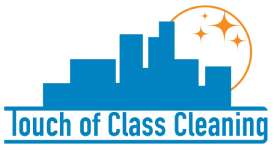Improved Cleaning Tasks to Meet Demand

The pandemic has sparkled a brilliant light on cleaning. It appears, office heads holding the satchel strings are beginning to understand that building administration temporary workers aren’t just cleaning for appearance; they’re shielding building inhabitants from inconspicuous germs, microscopic organisms, and infections.
Tragically, this acknowledgment harmonizes with a financial downturn. As of press, approximately 20 percent of Americans are jobless, and a developing number of organizations are closing their entryways. As organizations begin to return, office chiefs stay traditionalist in their spending. Many BSCs I’ve conversed with the state their post-pandemic clients are including as much as multiple times the measure of purifying, while at the same time designating zero extra dollars for the work.
This ought not to come as an astonishment. As indicated by Contracting Profits’ “2019 Facility Executive Contractor Expectations Survey,” just 24 percent of office executives consider it to be a flare-up as a defense for expansion in cleaning costs.
So, where does this leave temporary workers? As far as I can tell, if you’ve been requested all the more sanitizing and now been turned down at a cost increment, there are just two different choices.
You can execute cleaning strategies and items/hardware that improves efficiency. It’s an “accomplish more with less” reasoning; however, I like to consider it “work more efficiently.” Technology — mechanical autonomy, Internet of Things, and electrostatic gear, for instance — can bring about efficiencies. The test will be the underlying expense and accessibility as the graceful tie battles to keep up.
Since you shouldn’t consider accomplishing the work at a misfortune, the leading other choice is to trim different administrations for the expanded sanitization. As per our “Cleaning Costs And Frequencies Report,” there are three cleaning errands to investigate.
Before the pandemic, clearing or potentially wiping floors, spot cleaning glass windows, and passageway territories, and restocking bathroom gadgets were all being accomplished more often than cleaning and purifying high-contact surfaces. Cleaning for appearance unmistakably exceeded cleaning for wellbeing. Cutting frequencies in these zones can leave space for included purification.
As offices open back up, right now is an ideal opportunity to rethink each record. How have their cleaning needs changed, and in what manner will you react?





